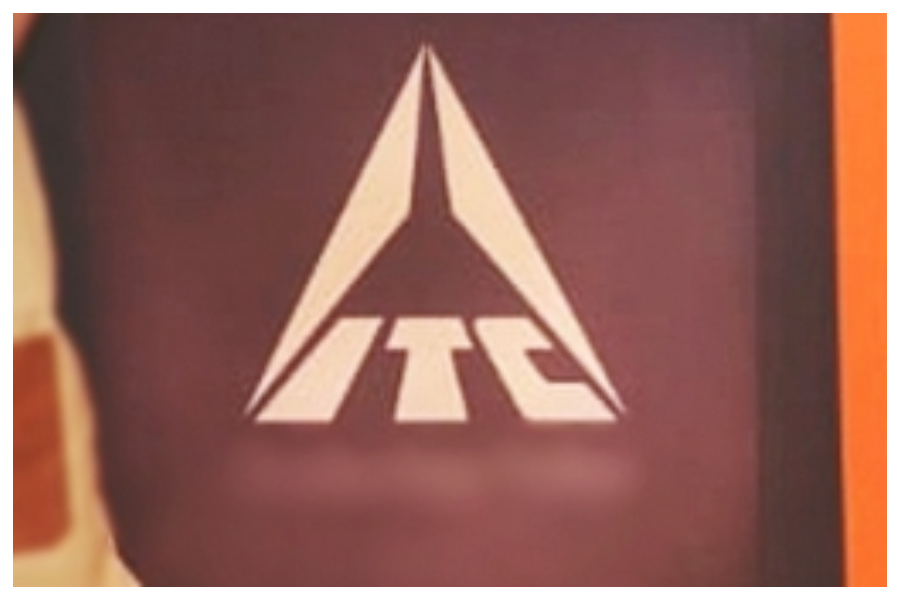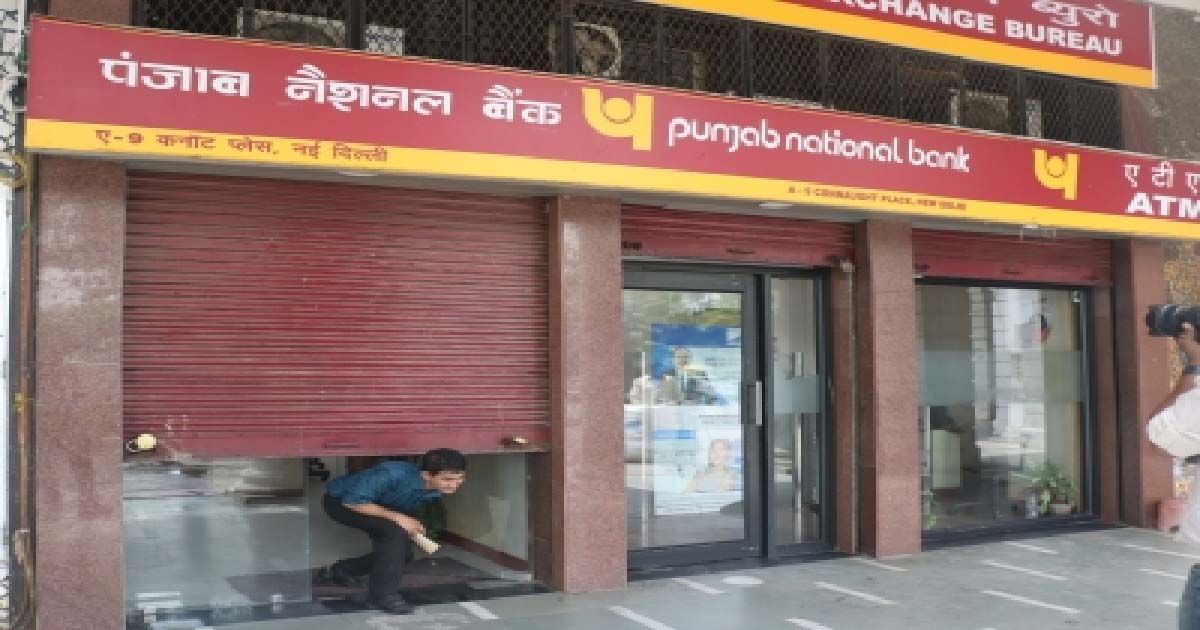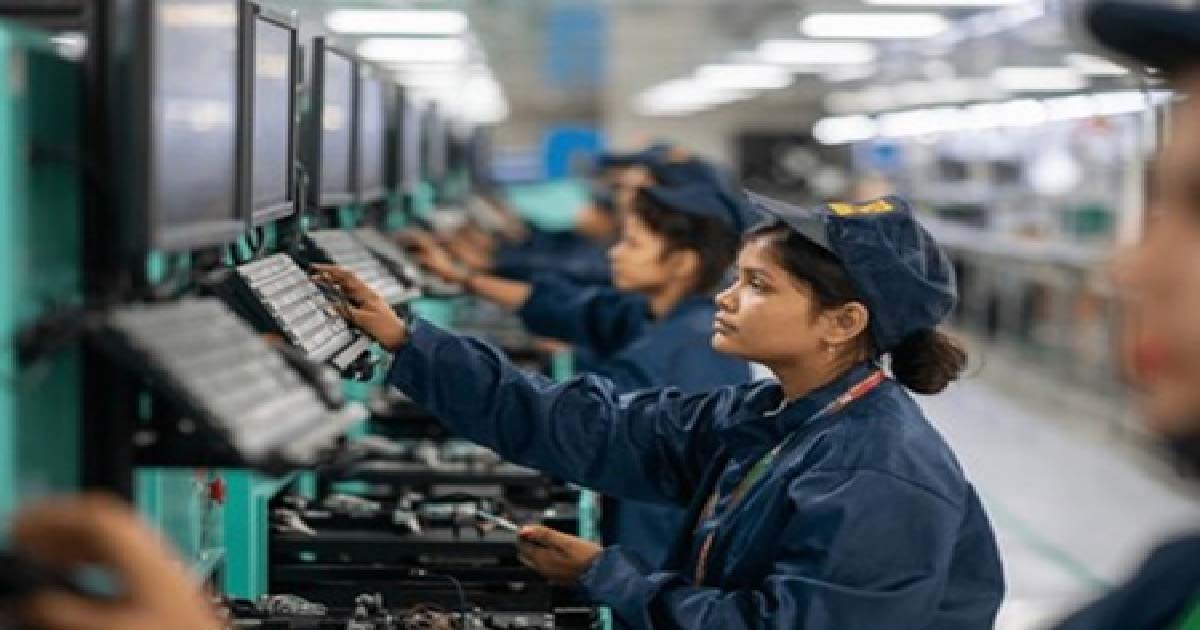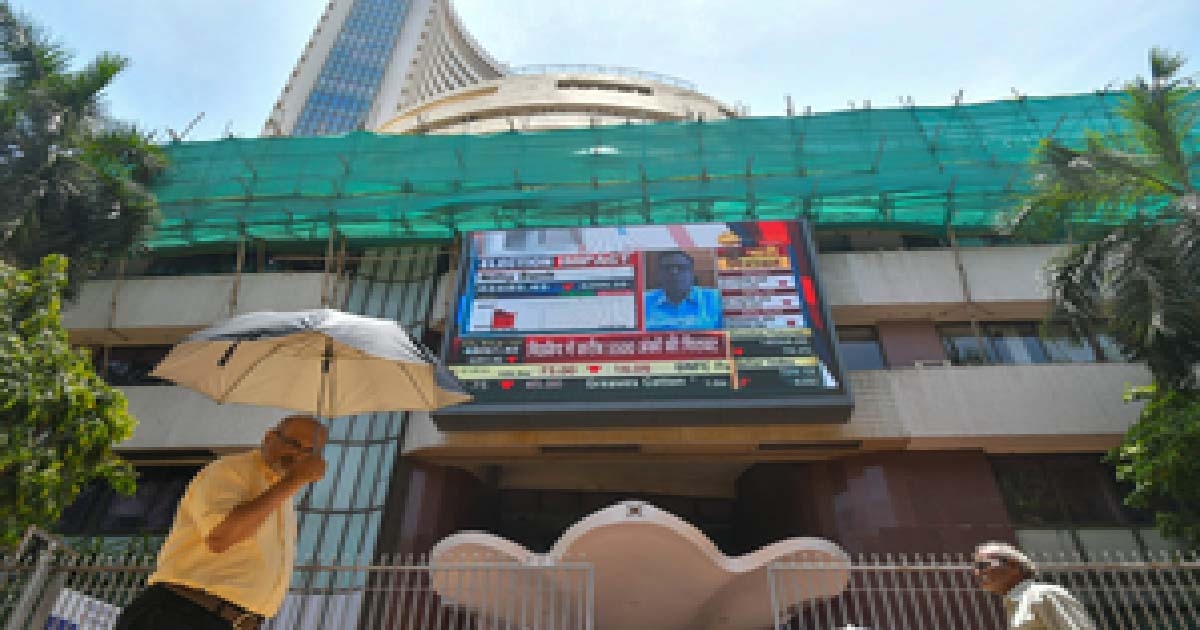Business
ITC goes beyond Plastic Neutrality in 2021-22, achieves yet another Sustainability Milestone

In line with the commitment made last year, diversified Indian conglomerate ITC has gone beyond plastic neutrality in 2021-22 through the orchestration of an integrated solid waste management programme that incorporates unique and multidimensional initiatives.
The Company collected and sustainably managed more than 54,000 tonnes of plastic waste across 35 states and union territories. The amount of plastic waste managed exceeded the amount of plastic packaging utilised by ITC during the year, enabling the company to achieve the milestone of plastic neutrality.
For more than a decade, the company has been running a holistic 360-degree solid waste management programme that is based on the principles of a circular economy and encompasses the entire waste value chain.
For a company with large-scale operations in FMCG and hospitality, going beyond plastic neutrality is a commendable feat to accomplish. The milestone is yet another reflection of ITC’s commitment to augmenting environmental and social capital, in line with Chairman Sanjiv Puri’s Sustainability 2.0 vision that calls for inclusive strategies that can support even more livelihoods and pursue newer pathways to fight climate change.
ITC has achieved this milestone by scaling up its portfolio of holistic initiatives focused on in-house innovation, robust waste management programmes centred around source segregation and sustainable business practices with mass impact.
“Over the decades, ITC has made industry leading efforts in end-to-end waste management. Through a large-scale and integrated solid waste management programme, ITC moved beyond plastic neutrality this year. In addition, the company is also using cutting-edge innovations to develop sustainable alternatives to plastic packaging for the industry.
“This milestone has been possible due to the untiring efforts of all our partners and I would take this opportunity to congratulate them for supporting Team ITC’s aspirations of contributing meaningfully to address some of the major sustainability challenges facing the country. The efforts to move beyond plastic neutrality and sustainable management of waste will continue apace in the years ahead as part of our Sustainability 2.0 agenda.” said Sanjiv Rangrass group head, ITC Life Sciences & Technology, Central Projects, EHS & Quality Assurance, ITC Ltd.
ITC has adopted a multi-pronged approach to reduce plastic in the company’s operations spanning Fast Moving Consumer Goods, Hotels, Paperboards and Packaging. This includes creating robust next-generation environment friendly packaging solutions, mega-scale waste collection programmes under its flagship waste management initiative ‘ITC WOW – Well-Being Out of Waste’ as well as focussed interventions in rural areas; a culture of plastic-free operations – in line with its philosophy of ‘Responsible Luxury’ to eliminate single-use plastic usage in ITC Hotels; and innovative models for sustainability which has plastic reduction and management at their core.
Within its operations, ITC has been recycling more than 99% of the waste for more than a decade.
ITC WOW, which enables the creation of a clean & green environment through community partnerships, has so far covered 18 million citizens across 46.7 lakh households in India. Currently operational in Bengaluru, Mysuru, Hyderabad, major towns of Telangana, Coimbatore, Chennai, Tirupur, Cochin, Muzaffarpur, Delhi and several districts of Andhra Pradesh, the initiative has raised awareness in over 52 lakh school children and 2,000 corporates since its inception. The initiative has also created sustainable livelihoods for over 16900 waste collectors by facilitating an effective collection system in collaboration with municipal corporations.
In addition to WOW, a separate ITC programme on Solid Waste Management (SWM), which deals with both wet and dry waste, is also operational in 17 districts of 9 states covering 14.6 lakh households.
Acknowledging the challenges with respect to disposal and recycling of multi-layered plastic, ITC has also pioneered a first of its kind sustainable and inclusive multi-layered plastic (MLP) management model in Pune.
The company’s targetted waste management initiatives not only ensure that lesser waste goes into landfills, but also enable larger value recovery from waste, thereby creating sustainable livelihoods for waste collectors, while creating additional income streams from collecting and sorting plastic waste. The company’s waste management programmes cover all categories of plastic waste, including flexibles, rigids and tetra packs.
Being India’s leading paperboards and specialty paper company, ITC has also introduced several sustainable alternatives to plastic packaging. Leveraging the cutting-edge R&D capabilities of ITC Life Sciences and Technology Centre (LSTC), Bengaluru, the Company has developed multiple sustainable packaging solutions for the industry, including the recyclable barrier board under the ‘Filo Series’ – an innovative substitute for single-use plastics in the food services segment, as well as the biodegradable ‘Omega Series’, launched as an alternative to plastic-coated containers and cups. Some of the other innovations by the Company include ‘Bioseal’ for replacement of polyethylene coating, ‘Oxyblock’ for improving barrier properties and recyclability, and the ‘Green Stiffner’ – a first of its kind compostable and recyclable solution.
In December last year, ITC’s Paperboards and Specialty Papers Division (PSPD), also collaborated with the Invest India, a non-profit venture under the Department for Promotion of Industry and Internal Trade, Ministry of Commerce and Industry, to launch the ‘ITC Sustainability Innovation Challenge’ which is aimed at supporting and crowd-sourcing innovative technology-based solutions from the start-up ecosystem on sustainable packaging and smart waste management.
Business
PNB declares Rs 2,434 crore alleged loan fraud against former promoters of Srei firms

New Delhi, Dec 27: Punjab National Bank (PNB) has declared a Rs 2,434 crore alleged loan fraud by the former promoters of Srei Equipment Finance and Srei Infrastructure Finance.
In a late evening exchange filing, the state-run PNB said that “Pursuant to the applicable provisions of SEBI (LODFR) Regulations, 2015 and the Bank’s Policy for determining materiality of events/information required to be reported to the Stock Exchanges, it is hereby informed that the bank has reported borrowal fraud to RBI against the erstwhile promoters of Srei Equipment Finance and Srei Infrastructure Finance”.
PNB said that of the total fraudulent borrowings, Rs 1,240.94 crore is related to Srei Equipment Finance and the remaining Rs 1,193.06 crore is related to Srei Infrastructure Finance.
The public sector lender also said it has 100 per cent provisions for these loans. The bank said the declaration of these two accounts as frauds is based on a forensic audit, which pointed to irregularities such as loans to connected parties and potential evergreening of loans.
However, Srei group has challenged the forensic audit report as the basis for the fraud classification, noting the matter is subjudice.
Other banks such as Punjab & Sind Bank, Bank of Baroda, and Union Bank of India have also earlier declared a loan fraud in connection with Srei companies.
The Srei group has been undergoing an insolvency resolution process since 2021, and the National Company Law Tribunal has approved a resolution plan submitted by the National Asset Reconstruction Company in 2023. The Srei group was sent to the NCLT by the Reserve Bank in October 2021 after it had found governance issues and defaults and the regulator superseded the boards of Srei Infrastructure Finance and Srei Equipment Finance.
In February 2023, NARCL emerged as the successful bidder for SIFL and SEFL which together owed Rs 32,750 crore to lenders. NARCL won the bid in February 2023, got the NCLT approval in August 2023, and finalised the acquisition by January 2024.
Business
India 2nd largest mobile manufacturing country in the world: Minister

New Delhi, Dec 27: India has ramped up electronics production six-fold and is the second largest mobile manufacturing country in the world, Union Minister of Electronics and Information Technology Ashwini Vaishnaw said on Saturday.
In multiple posts on social media platform X, Vaishnaw said that the country has increased electronic exports eightfold over the past 11 years, mainly driven by policy support from the Production Linked Incentive Scheme.
The PLI scheme for Large Scale Electronics Manufacturing has attracted over Rs 13,475 crore in investment and helped achieve production of about Rs 9.8 lakh crore in the electronics sector, driving manufacturing, jobs, and exports, he said.
Vaishnaw highlighted that “over 1.3 lakh jobs were created in the last five years and that electronics is now India’s third‑largest export category, climbing from seventh place”.
He said the country was initially focusing on finished products, but the Electronics Component Manufacturing Scheme supported a shift to “building capacity for modules, components, sub-modules, raw materials, and the machines that make them.”
The Electronics Component Manufacturing Scheme has 249 applications representing Rs 1.15 lakh crore in investment, Rs 10.34 lakh crore in production, and creating 1.42 lakh jobs, the post said, adding it is the highest-ever investment commitment in India’s electronics sector, indicating industry confidence.
Vaishnaw also noted progress in the semiconductor sector, saying ten units have been approved, with three already in pilot or early production. The minister said that “fabs and ATMPs from India will soon supply chips to phone and electronics manufacturers”.
“Electronics manufacturing created 25 lakh jobs in the last decade. This is the real economic growth at the grassroots level,” the minister said.
“As we scale semiconductors and component manufacturing, job creation will accelerate. From finished products to components, production is growing. Exports are rising. Global players are confident. Indian companies are competitive. Jobs are being created. This is ‘Make in India’ impact story!” he noted.
Business
Indian stock market ends holiday-shortened week in positive terrain

Mumbai, Dec 27: Indian equity markets ended the week in a positive terrain, buoyed by expectations of stronger domestic demand, a favourable liquidity outlook and optimism over potential Fed policy easing in 2026, analysts said on Saturday.
The holiday-shortened week opened with a bullish undertone; however, momentum tapered off as the days progressed.
On Friday, Sensex closed at 85,041.45, slipping 367.25 points or 0.43 per cent. Nifty also ended in the red, falling 99.80 points or 0.38 per cent to settle at 26,042.30.
According to market watchers, the year-end lull kept trading largely range-bound, with hopes for a Santa Claus rally diminishing amid the absence of fresh catalysts, limited progress in US–India trade talks, and caution ahead of the upcoming earnings season.
“Sectoral trends were mixed, marked by selective profit booking across most segments, while metals, FMCG, and media stocks offered notable resilience,” said Vinod Nair, Head of Research, Geojit Investments Ltd.
Nifty 50 ended the week at 26,042, continuing to respect its long-term rising channel on the daily chart. The index remains comfortably above the 20-day EMA cluster, preserving the medium-term bullish structure, said analysts, adding that as long as Nifty sustains above the 26,000–25,900 support zone, the overall bias remains positive.
On the domestic front, RBI’s liquidity interventions, such as open market operations and a USD/INR buy–sell swap, helped stabilise the rupee, though persistent FII outflows continued to weigh on sentiment.
Meanwhile, gold advanced on safe-haven demand, while crude prices hovered near multi-year lows, though U.S. steps to tighten pressure on Venezuelan oil shipments could exert upward pressure in the near term
Looking ahead, market sentiment is likely to stay cautious as investors brace for the upcoming earnings season while remaining attuned to global developments and currency movements, said analysts.
Attention will also turn to next week’s data releases, including India’s industrial and manufacturing output figures, manufacturing PMI, and the US FOMC minutes, said Nair.
-

 Crime3 years ago
Crime3 years agoClass 10 student jumps to death in Jaipur
-

 Maharashtra1 year ago
Maharashtra1 year agoMumbai Local Train Update: Central Railway’s New Timetable Comes Into Effect; Check Full List Of Revised Timings & Stations
-

 Maharashtra1 year ago
Maharashtra1 year agoMumbai To Go Toll-Free Tonight! Maharashtra Govt Announces Complete Toll Waiver For Light Motor Vehicles At All 5 Entry Points Of City
-

 Maharashtra1 year ago
Maharashtra1 year agoFalse photo of Imtiaz Jaleel’s rally, exposing the fooling conspiracy
-

 National News1 year ago
National News1 year agoMinistry of Railways rolls out Special Drive 4.0 with focus on digitisation, cleanliness, inclusiveness and grievance redressal
-

 Maharashtra1 year ago
Maharashtra1 year agoMaharashtra Elections 2024: Mumbai Metro & BEST Services Extended Till Midnight On Voting Day
-

 National News1 year ago
National News1 year agoJ&K: 4 Jawans Killed, 28 Injured After Bus Carrying BSF Personnel For Poll Duty Falls Into Gorge In Budgam; Terrifying Visuals Surface
-

 Crime1 year ago
Crime1 year agoBaba Siddique Murder: Mumbai Police Unable To Get Lawrence Bishnoi Custody Due To Home Ministry Order, Says Report












